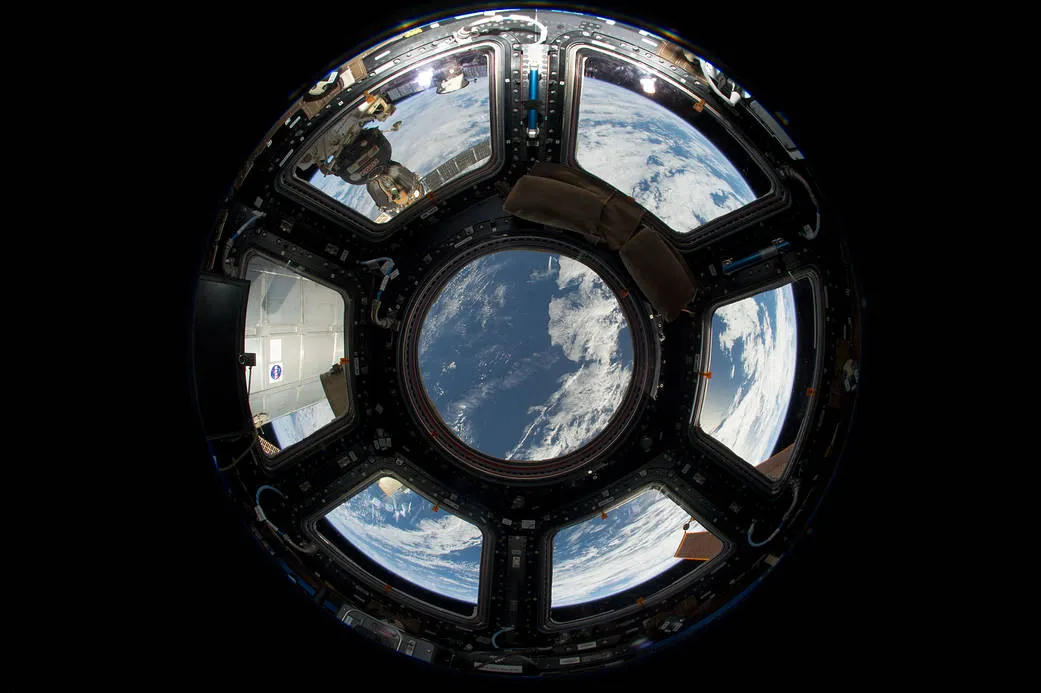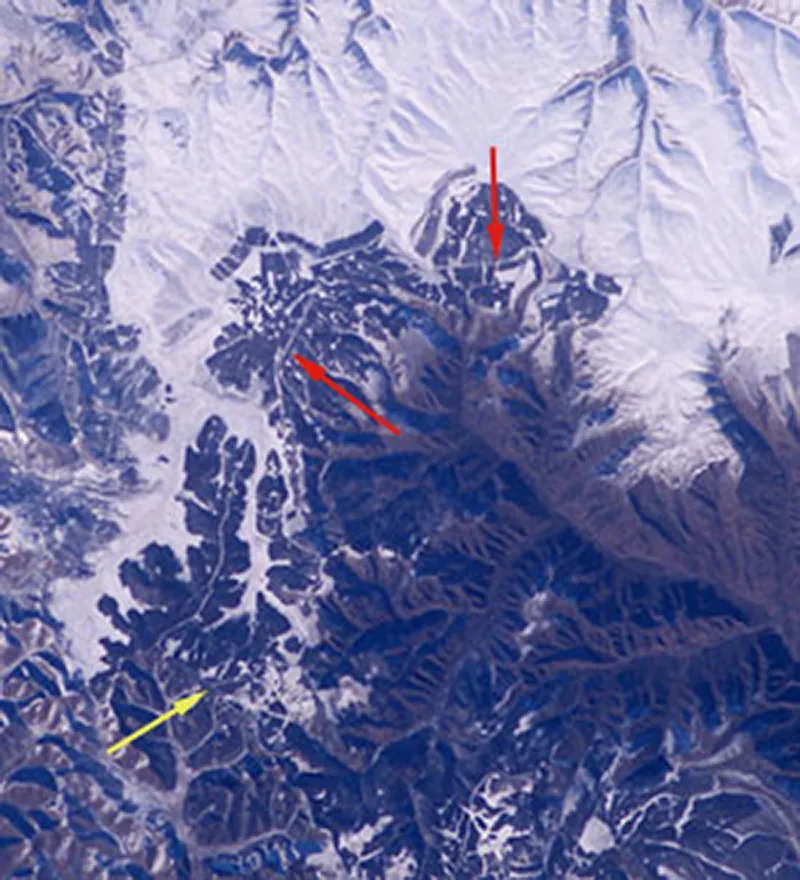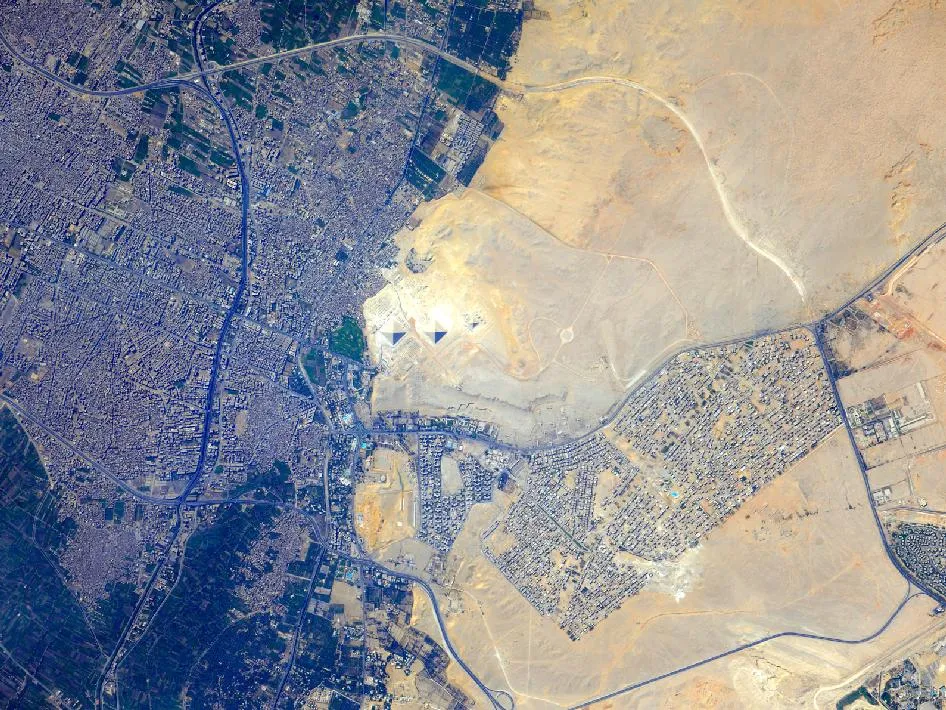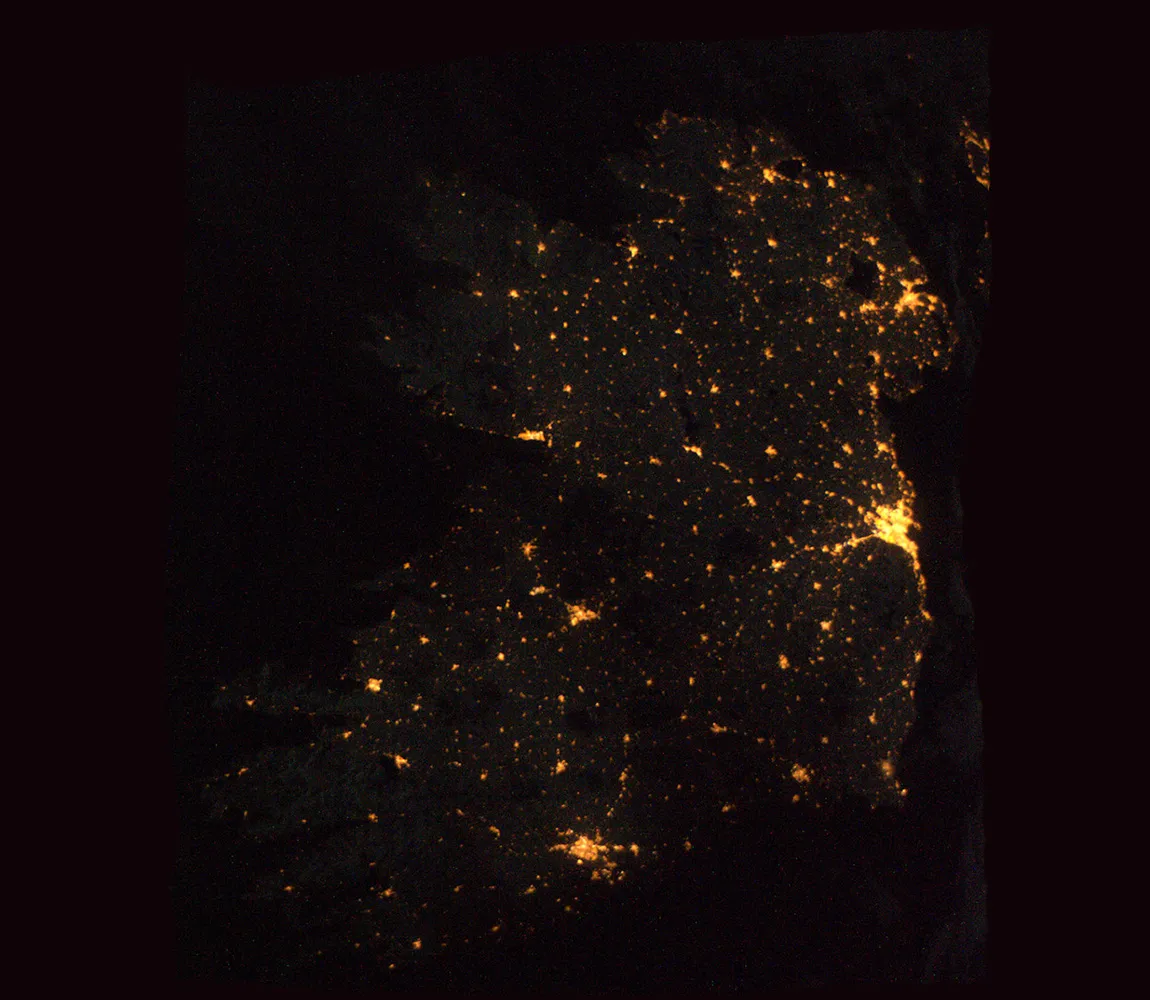When it comes to spaceflight and astronomy, many myths abound, one of the biggest being the idea that you can see the Great Wall of China from space.
For example, there are plenty of strange things astronomers used to believe about the Moon.
One space-based myth that we all have heard is the idea the Great Wall of China is the only human-made structure that can be seen from space.
More Earth from space

Some people once believed that the Great Wall of China was so big, it could be seen from the surface of the Moon.
Surely, given the International Space Station's position in low-Earth orbit, astronauts living and working onboard the ISS would be the perfect candidates to prove or disprove whether the Great Wall of China can be seen with the naked eye from space.

The truth is that the Great Wall of China cannot be seen from space. To be more precise, it can't easily be seen with the naked eye.
The myth existed long before the Space Age; long before Yuri Gagarin's famous flight to become the first human in space, and long before the Apollo missions to the Moon.
In fact, as early as 1754 the famed English scientist and antiquarian Rev. William Stukeley wrote in a private letter about "the Chinese wall, which makes a considerable figure upon the terrestrial globe, and may be discerned at the Moon."

Perhaps much of the presumption surrounding the Great Wall of China's visibility from the Moon came from 19th century Italian astronomer Giovanni Schiaparelli's observations of Mars, during which he observed what he called "canali" (channels).
This was famously mistranslated into English as "canals", leading some English speakers to believe that the Martian structures had been built by an intelligent native populace.
Such misinterpretation could have led to the conclusion that likewise similarly mammoth structures on Earth would be visible from elsewhere in the Solar System.

It was during the Apollo missions that the myth of being able to see the Great Wall of China from the surface of the Moon was empirically debunked.
Apollo 12 Lunar Module Pilot Alan Bean is quoted as saying: "The only thing you can see from the Moon is a beautiful sphere, mostly white, some blue and patches of yellow, and every once in a while some green vegetation.
"No man-made object is visible at this scale."
But what about seeing the Great Wall of China from the International Space Station?
Well, on 24 November 2004, an image of the Great Wall of China was captured from low Earth orbit by US astronaut and International Space Station Commander Leroy Chiao.
His image can be seen below. It was captured with a digital camera and 180mm lens.

The image shows central Inner Mongolia, and the yellow arrow indicates an estimated location of 42.5N 117.4E, where the wall is visible, according to this great NASA webpage on the subject.
The red arrows supposedly point to other visible sections of the wall.
And then there's ESA astronaut Alexander Gerst's photo of the Great Wall of China from space, captured from the International Space Station on 19 June 2018.
At the time, Gerst posted on social media: "I think I finally found the answer to a question I've been asked a 1000 times. Can we see the Great Wall of China from the ISS?
"Next to impossible with the naked eye. But I tried with an 800 mm tele lens. Still tough to spot. What do you think, is this it?"

So while the Great Wall of China can be photographed or observed from space using magnification, it can't be seen with the naked eye.
This was confirmed by China's own first astronaut, Yang Liwei, who orbited Earth 14 times in October 2003 during the Chinese space agency's Shenzhou 5 mission.
"The Earth looked very beautiful from space, but I did not see our Great Wall," he said.
Read more:
- Where is the coldest place on Earth?
- What colour is the Sun?
- How long does it take to travel around the world?
Other structures visible from space

Plenty of other human-made structures can be seen from space, including - famously - the Pyramids of Giza, which were photographed during International Space Station Expedition 32.
And some of the most impressive images taken of Earth from the ISS include views of Earth at night, where the bright lights of cities highlight the most populated regions.
In this image of Ireland captured from the ISS, the cities of Belfast, Dublin and Cork are most prominent.

Similiarly, below is a view of the Red Sea Coast of Saudi Arabia, captured from onboard the International Space Station.
Humanity's presence is clearly seen by the concentrated pockets of artificial light, which glow brightly against the background darkness of the cosmos.

So while it turns out the Great Wall of China can't be seen from space with the naked eye, there are plenty of other signifiers that life exists on planet Earth, should any interstellar explorers happen to chance upon our Solar System.
For more on observing Earth from space, read our interview with ESA astronaut Paolo Nespoli.
